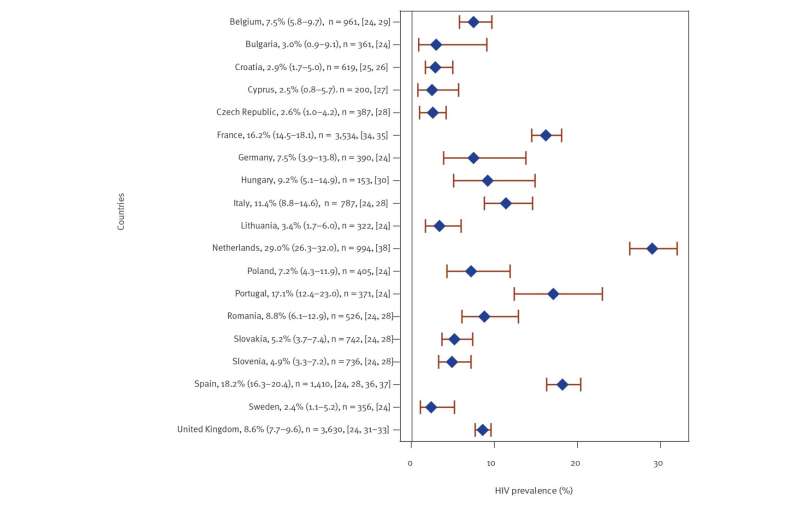
Marking World AIDS Day on 1 December, Eurosurveillance has published an article that brings together evidence on HIV seroprevalence in five population groups affected by HIV in the countries of the European Union and European Economic Area (EU/EEA): men who have sex with men (MSM), people who inject drugs (PWID), people in prison, sex workers and transgender people.
Sex between men is the main HIV transmission mode (39% in 2019) among newly reported diagnoses in the EU/EEA overall while injecting drug use accounted for 4% of all new diagnoses. Over the years, many European HIV prevention and control measures consequently have been targeted towards MSM and PWID in the attempt to address their higher risk for HIV and other sexually transmitted and blood-borne infections.
HIV in key populations: Lack of routine data
Alongside these two population groups, prisoners, sex workers and transgender people have a similar risk due to structural, legal, social, economic, behavioral and biological factors. In addition, there is no standardized way of collecting and including information on risk factors such as sex work or imprisonment in national surveillance data for these groups, which leads to a gap in the understanding of HIV epidemiology in those key populations across Europe.
In their systematic literature review, Stengaard et al. pooled peer-reviewed studies published during 2009–2019 and identified 87 country- and population-specific studies from 23 countries for analysis. The resulting data were grouped by key population and presented in forest plots by country with simple or pooled (if two or more studies were identified) prevalence and 95% confidence intervals.
MSM and PWID combined both the highest number of studies and the largest identified variation in HIV prevalence, ranging from 2.4–29.0% (19 countries) for MSM and from 0.0–59.5% (13 countries) for PWID.
Among prisoner (nine countries) populations, prevalence ranged from 0.0–15.6% based on available data from the literature, and in sex workers prevalence ranged between 1.1–8.5% (five countries). For HIV prevalence in transgender people, data was retrieved from only one country, indicating a prevalence of 10.9%. Individuals belonging to several key population groups showed higher HIV prevalence.
Closing a knowledge gap
Given that more studies about MSM and PWID were identified, the authors outline a knowledge gap regarding HIV prevalence in the other population groups for many countries in Europe, with for example extremely limited published data on HIV prevalence among transgender people.
Source: Read Full Article





